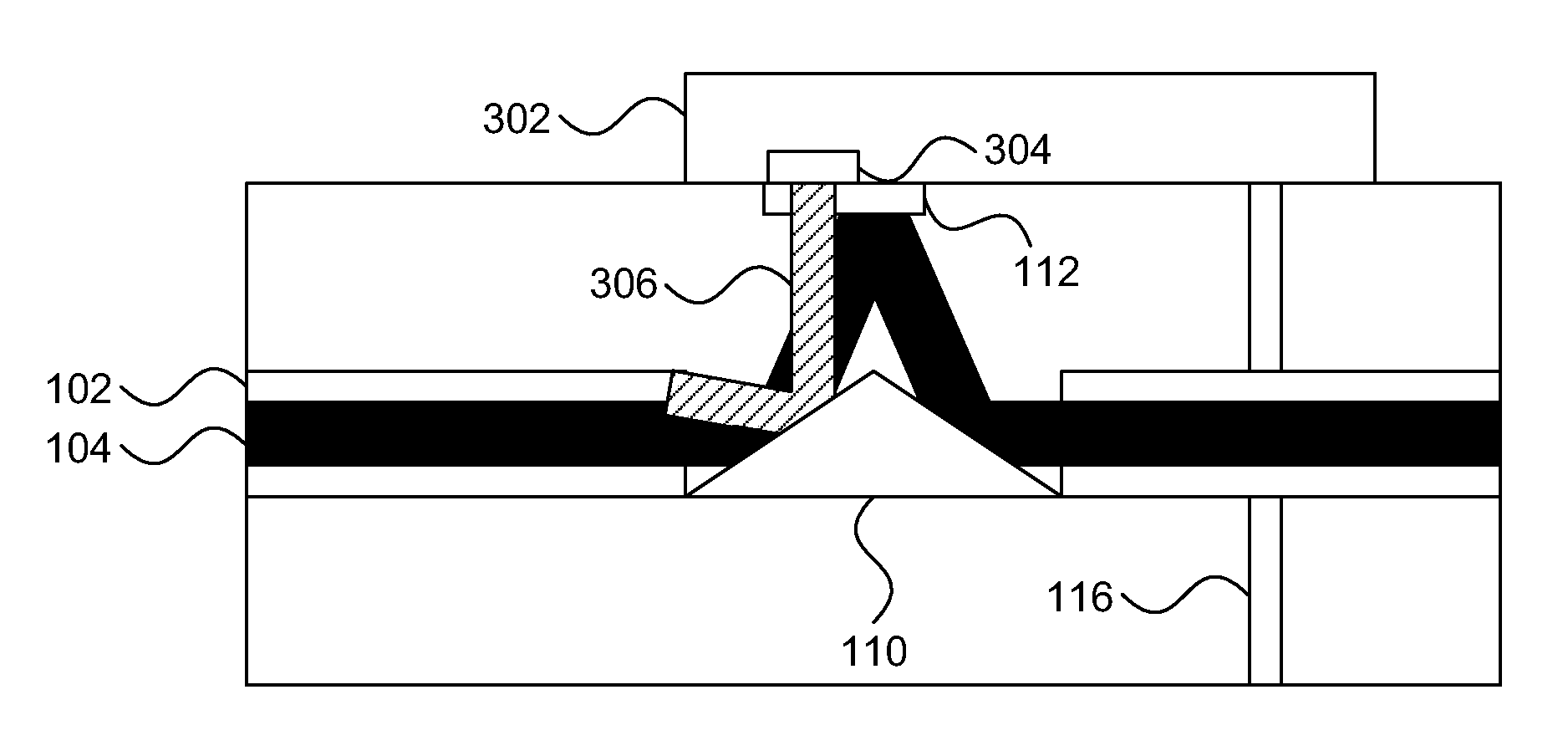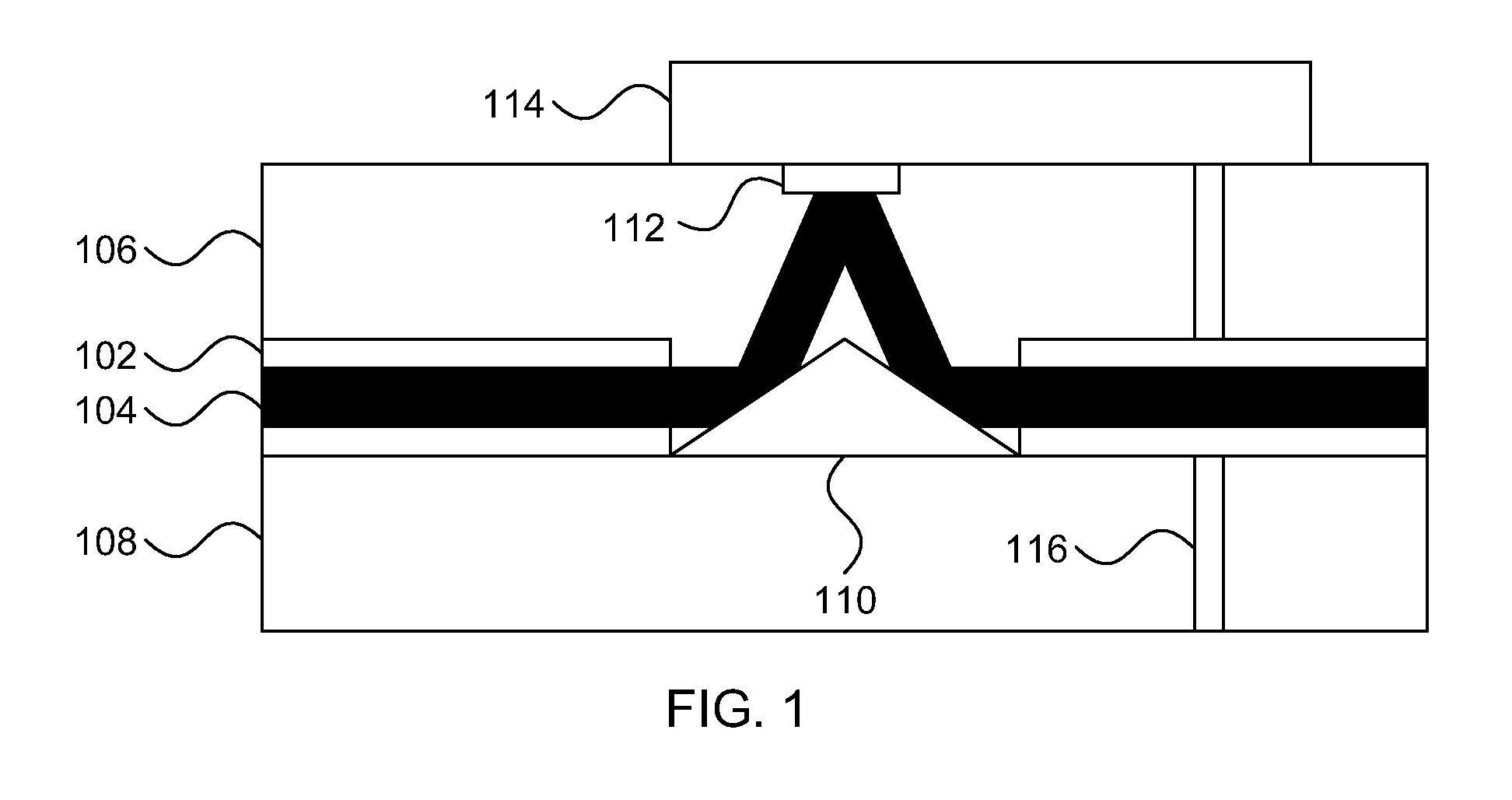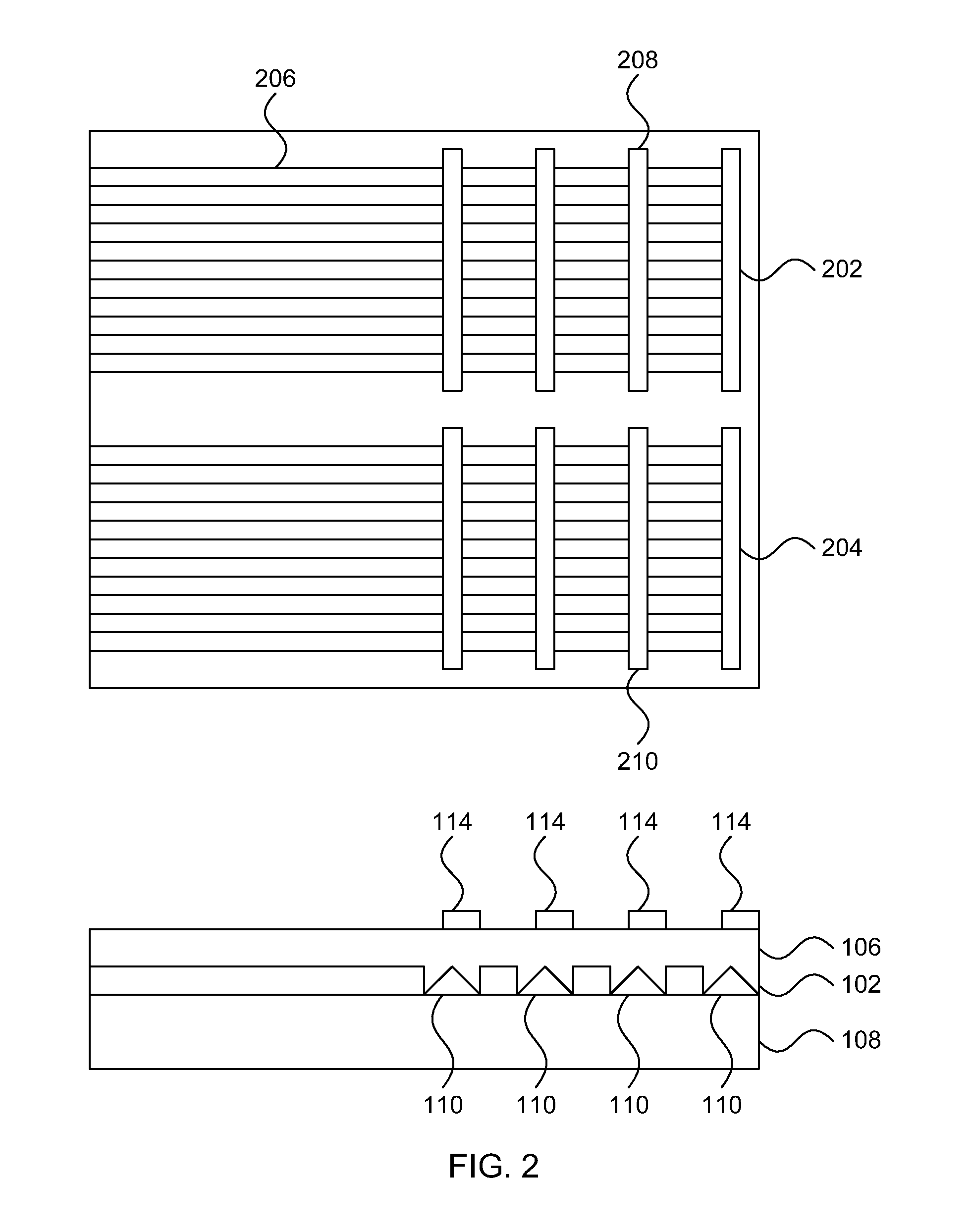Double mirror structure for wavelength division multiplexing with polymer waveguides
a polymer waveguide and wavelength division technology, applied in optical waveguide light guides, instruments, optics, etc., can solve the problems of increasing the total increasing the bandwidth of the system, and increasing the density of the physical limi
- Summary
- Abstract
- Description
- Claims
- Application Information
AI Technical Summary
Benefits of technology
Problems solved by technology
Method used
Image
Examples
Embodiment Construction
[0025]Embodiments of the present invention provide wavelength division multiplexing (WDM) in a polymer waveguide structure having an array of cores with a high density. The present embodiments use a double mirror structure with a dielectric filter deposited on an opto-electronic device array or on the top cladding to form wavelength filters. Although it is specifically contemplated that polymer waveguides be used in the present embodiments, it should be recognized that the present principles may be readily extended to other types of waveguide. Polymer waveguides and micromirrors guide the light from laser arrays with a high density, for example a 125 um core pitch. The signals from a board can be sent directly to another board via polymer waveguides for short range integrated data transfer, or can be coupled to a fiber ribbon for longer range data transfer.
[0026]Referring now to the drawings in which like numerals represent the same or similar elements and initially to FIG. 1, a WDM...
PUM
| Property | Measurement | Unit |
|---|---|---|
| angle | aaaaa | aaaaa |
| angle of incidence | aaaaa | aaaaa |
| angle of incidence | aaaaa | aaaaa |
Abstract
Description
Claims
Application Information
 Login to View More
Login to View More - R&D
- Intellectual Property
- Life Sciences
- Materials
- Tech Scout
- Unparalleled Data Quality
- Higher Quality Content
- 60% Fewer Hallucinations
Browse by: Latest US Patents, China's latest patents, Technical Efficacy Thesaurus, Application Domain, Technology Topic, Popular Technical Reports.
© 2025 PatSnap. All rights reserved.Legal|Privacy policy|Modern Slavery Act Transparency Statement|Sitemap|About US| Contact US: help@patsnap.com



